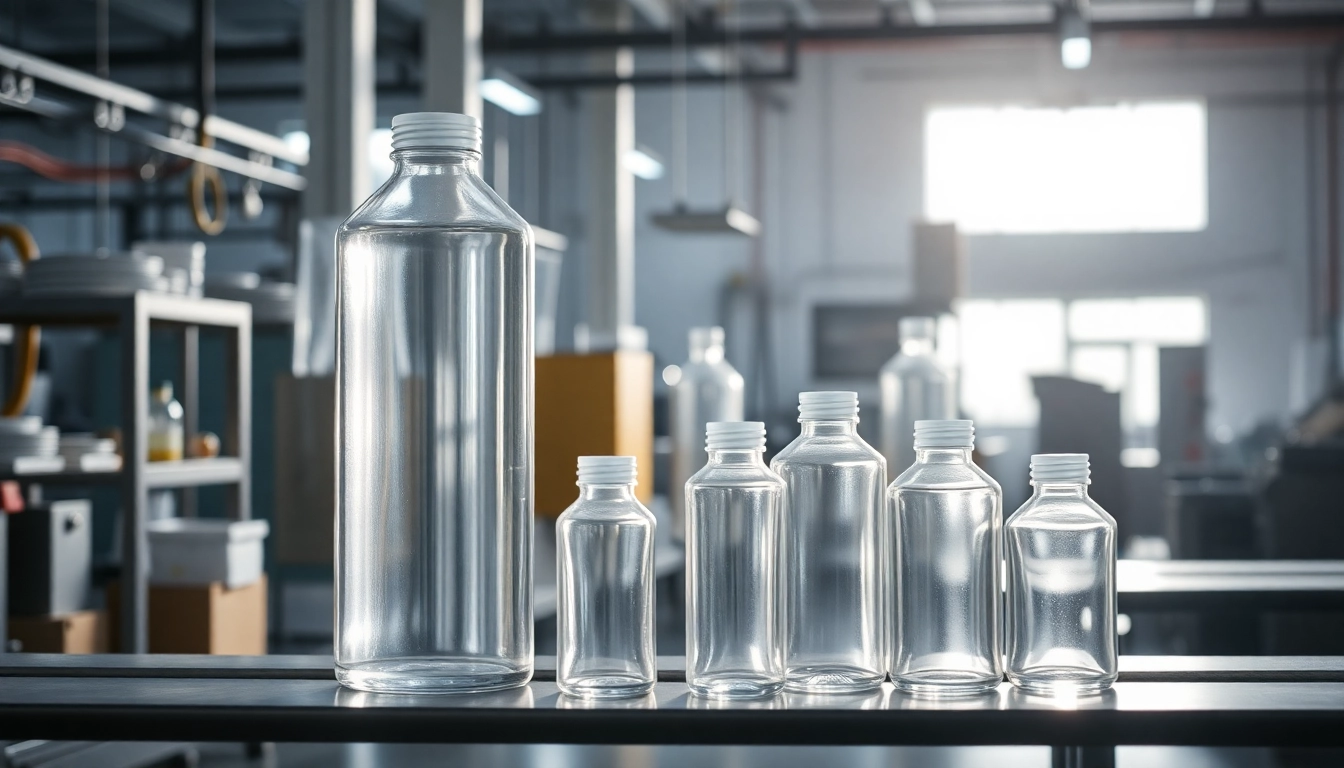Manufacturing and Applications of Polietilen Şişe: A Comprehensive Guide for Businesses
Introduction to Polietilen Şişe and Its Industry Significance
In the dynamic world of packaging and industrial products, polietilen şişe stands out as a versatile, durable, and cost-effective solution. These plastic bottles are integral to numerous sectors, from pharmaceuticals and cosmetics to chemicals and food packaging. Their widespread adoption stems from their inherent properties that combine safety, flexibility, and environmental friendliness, making them a preferred choice for manufacturers and consumers alike.
As industries evolve, the demand for high-quality, customizable, and environmentally sustainable polietilen şişe increases. This article delves deep into the manufacturing processes, design considerations, health and environmental aspects, and procurement strategies associated with these essential containers—offering comprehensive insights to industry professionals, entrepreneurs, and end-users.
Manufacturing Processes and Quality Standards
Production techniques for durable and safe polietilen şişe
The production of polietilen şişe primarily involves advanced extrusion and blow molding techniques. The most common method is stretch blow molding, where polyethylene resin is melted and then blown into pre-shaped molds through high-pressure air. This process ensures uniform wall thickness, high structural integrity, and a smooth surface finish, critical for both aesthetics and functional durability.
High-density polyethylene (HDPE) is often preferred due to its strength and chemical resistance, especially for industrial and chemical applications. For applications requiring clarity and aesthetic appeal, low-density polyethylene (LDPE) or linear-low density polyethylene (LLDPE) are also utilized.
Modern manufacturing lines incorporate automation and precision sensors that optimize parameters such as temperature, pressure, and cooling rates, resulting in consistent quality. Techniques like resin pre-drying and real-time inspection systems help prevent defects, such as cracks or inconsistent wall thickness, enhancing overall product durability.
Material choosing and compliance with health regulations
Selecting the right polyethylene grade is fundamental to ensuring safety and regulatory compliance. For food-grade applications, such as bottled water or edible oils, manufacturers opt for virgin HDPE, which complies with international health standards like FDA and European Union regulations. The choice of materials must also adhere to restrictions against BPA, phthalates, or other harmful chemicals.
In chemical packaging, resistance to solvents and corrosive agents is crucial. Polyethylene’s inert nature makes it suitable, but specific formulations are tailored for high chemical resistance and stability.
How to ensure quality control during manufacturing
Quality assurance in polietilen şişe manufacturing involves multiple steps:
- Material Testing: Ensuring raw polyethylene meets purity and regulatory standards.
- Process Monitoring: Using real-time sensors for temperature, pressure, and cycle consistency.
- Dimensional Control: Precise measurement of bottle dimensions to ensure batch uniformity.
- Leak and Pressure Tests: Especially critical for pressure-resistant bottles in the chemical industry.
- Surface Inspection: Checking for surface defects or contamination.
Implementing Statistical Process Control (SPC) and Six Sigma methodologies can significantly reduce variability and defects, leading to high-quality outputs that meet industry standards.
Design Considerations and Customization
Optimal sizes, shapes, and opening types
The design of polietilen şişe must align with its intended use. For consumer convenience, sizes range from small 50 ml bottles for cosmetics to large 5-liter containers for industrial oils. Common shapes include cylindrical, rectangular, or ergonomic designs that facilitate handling and storage.
The opening type—such as screw caps, flip-top, or pump dispensers—affects usability and sealing integrity. For example, screw caps provide secure closure for liquids prone to spillage, while flip-top caps are suitable for spray or pour functions.
Branding, labeling, and aesthetic customization
Customization is vital for branding and marketing. The surface of polietilen şişe can be easily printed with logos, product details, and instructions using hot stamping, screen printing, or shrink sleeves. Transparent bottles allow for showcasing products, whereas opaque or tinted bottles provide UV protection and aesthetic appeal.
Innovative surface textures or embossed branding not only enhance visual appeal but also improve grip and user experience.
Innovative features for consumer convenience
Modern consumer-centric features include ergonomic grips, easy-pour spouts, and tamper-evident seals. Some bottles incorporate ergonomic indentations for a secure grip, while others feature built-in handles for larger sizes. Additionally, child-resistant caps are essential for hazardous substances, ensuring safety without compromising usability.
Incorporating Innovation in cap design, such as flip caps with dispensing valves or pump systems, adds functionality and convenience, elevating the consumer experience.
Environmental and Health Aspects of Polietilen Şişe
Recyclability and sustainable production practices
Polyethylene is highly recyclable, with many facilities recycling used bottles into raw material for manufacturing new ones. This closed-loop system reduces waste and conserves resources. Key practices include:
- Using recycled polyethylene (rPE) in production, which maintains quality while reducing environmental footprint.
- Implementing energy-efficient manufacturing processes to minimize carbon emissions.
- Designing bottles for easier recycling, such as single-material construction and minimal use of multi-layered composites.
Companies proactive in sustainable practices often obtain certifications such as ISO 14001, demonstrating environmental responsibility.
Health safety and chemical composition insights
The inert nature of polyethylene makes it a safe choice for food, beverages, and pharmaceuticals when produced under strict quality standards. Polietilen şişe do not leach chemicals under normal use, provided they are virgin or qualified recycled materials. Scientific studies confirm that polyethylene does not emit toxic substances during storage or use.
Regulatory compliance ensures consumer safety, and ongoing research continuously improves formulations to eliminate potential risks.
Best disposal and recycling methods for end-users
Proper disposal involves rinsing bottles to remove residues and placing them in designated recycling bins. Many municipalities facilitate polyethylene recycling through curbside programs. Additionally, consumers can participate in deposit-return schemes or local recycling initiatives to promote sustainability.
Recycling centers can process polietilen şişe into new bottles or other products like piping, containers, and insulation materials, closing the loop in the product lifecycle.
Selection and Procurement Tips for Businesses
What to consider when choosing suppliers
To ensure consistent quality, businesses should evaluate suppliers based on their ISO certifications, compliance with health standards, capacity for customization, and ability to meet delivery deadlines. Viewing samples and requesting certifications like ISO 9001 and ISO 14001 provide additional confidence.
Building strong relationships with reliable suppliers also facilitates better negotiation on prices, lead times, and after-sales support.
Cost analysis and bulk purchasing advantages
Bulk purchasing significantly reduces unit costs, improving profit margins. Additionally, long-term contracts can secure supply stability in fluctuating markets. Consider total cost of ownership, including transportation, storage, and potential wastage.
Investing in higher quality bottles minimizes defect-related costs and enhances brand reputation.
Future trends and technological advancements in polietilen şişe
The industry is moving toward smarter and more sustainable packaging solutions. Innovations include biodegradable polyethylene variants, lightweighting techniques to reduce material usage, and integration of smart caps with tamper-evident or sensor-based features for tracking and safety.
Advanced manufacturing technologies such as 3D printing and automation will further enhance customization and production efficiency, meeting the increasing demand for innovative packaging.

